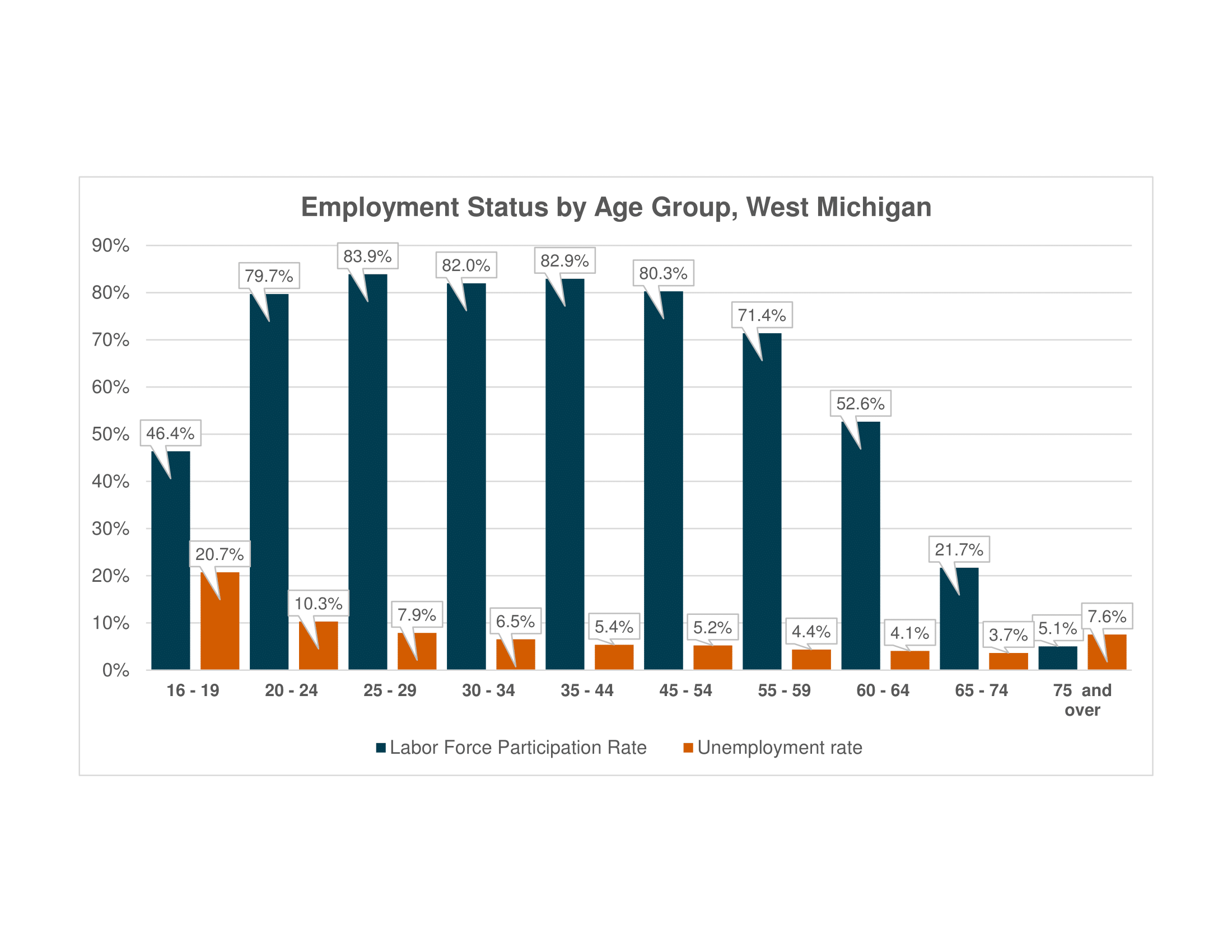Although they are often derived as a simplified look at the health of the economy, the unemployment rate and labor force participation rate of a region are among the most pervasive indicators of economic prosperity that we utilize. While both of these indicators have continued to improve in West Michigan since the end of the Great Recession in 2009, it is important to note that such progress has not been distributed evenly throughout the region. In this post, we will look at pockets of high unemployment and low labor force participation rates across age groups.
How much does employment vary by age?
With an unemployment rate of 3.9% for the region over the first half of 2018, West Michigan is seemingly at full employment. While this may be true in the aggregate, the level of unemployment within the region varies substantially depending on how you define the labor force.
The U.S. Bureau of Labor and Statistics utilizes an expansive definition to characterize who is included in their labor force statistics, encompassing the civilian non-institutionalized population of those aged 16 and above. However, Talent 2025 prefers to define the working-age population as those between the ages of 25 and 54.

Unemployment rates vary significantly in West Michigan across age groups, as evident by the figure above, with the lowest rate observed for those between the ages of 65 and 74 (3.7%) and the highest for those between the ages of 16 and 19 (20.7%). Interestingly enough, it would appear that the unemployment rate steadily decreases as the age bracket being evaluated increases, which could reflect the accumulation of job experience and skills that correspond with aging. However, the unemployment rate for those aged 75 and above appears to a deviate from this trend, with a sharp increase in unemployment of 3.9% from the previous age group with the lowest rate, those between 65 and 74.
How much does labor force participation vary by age?
While it’s clear that age plays a role in determining the unemployment rate of a population, it would appear that age is even more influential when it comes to assessing the labor force participation rate, or the portion of the total population included in the labor force (either employed or unemployed and actively seeking work). In West Michigan, only 5.1% of those aged 75 and above were actively involved in the labor force, the lowest rate of any age group. The next least participatory age bracket in West Michigan were those between 65 and 74, where only 21.7% were either employed or unemployed. Conversely, those between the ages of 25 and 29 were the most involved in the labor force, at a rate of 83.9%, closely followed by the 35 to 44 age group (82.9%).
Future Data Topics
Have you been enjoying these “Data Points” blogs? Are you interested in other data? Let us know what topics you’d like to know more about on our Twitter @WMTalent2025! We’d like to crunch some numbers that you’re interested in.


